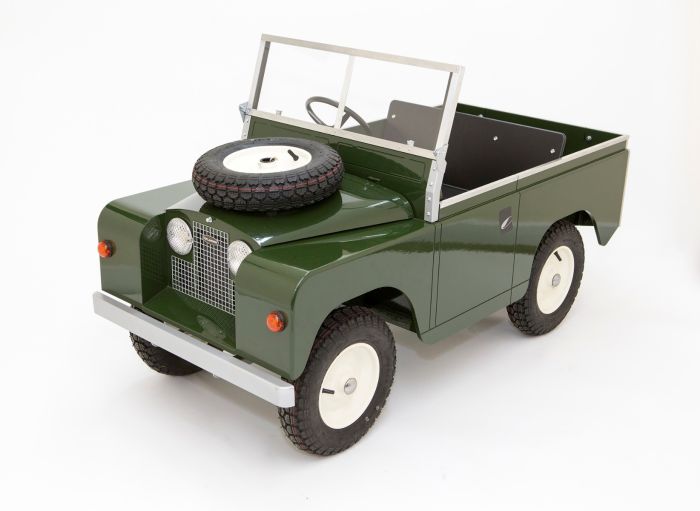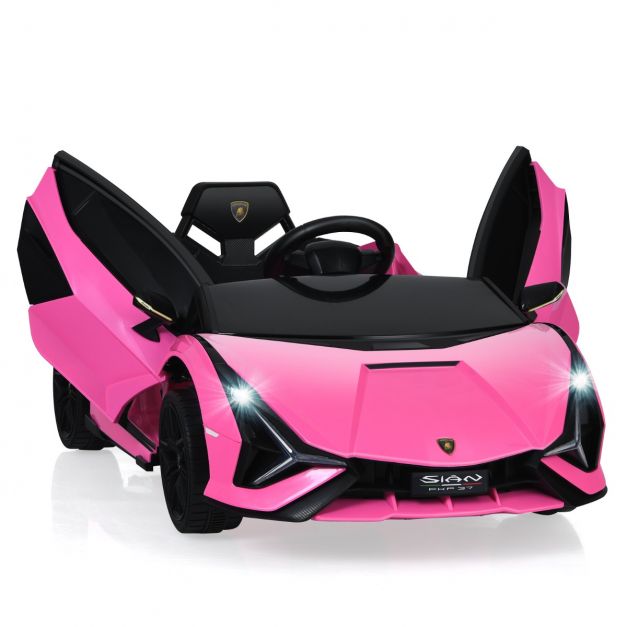Good Advice To Selecting Kids Cars
Wiki Article
What Do I Need To Know About The Battery Life And Charging Time Of An Electric Children's Car?
Knowing the charging duration and battery life of children who ride electric on their Cars will allow you ensure that the kids have uninterrupted play time. What you should know the battery type
Most electric ride-on vehicles are rechargeable and utilize led-acid or lithium-ion batteries. Lithium-ion batteries last longer life span and faster charging time compared to lead acid batteries.
Battery Capacity
The size of the battery, which is measured in amperehours (Ah) or watthours(Wh) will determine the amount of time a car can be operated with one charge. The capacity of the battery is crucial since it determines the length of time the ride-on car can operate before recharging.
Run Time -
The run time is the maximum amount of continuous operation that an electric ride on car can achieve with one charge. The running time of an electric ride-on automobile can vary based on factors like battery capacity and the motor's power. It is also dependent on the terrain and the amount of weight the driver.
Common electric ride-on vehicle run times vary from 30 minutes and two hours per charge. But, lithium batteries that are high-capacity will provide longer running time.
Charge Time
The charging time refers how it takes to charge a completely depleted battery. Charge time may vary based on the capacity of the battery, the specifications of the charger and the charging method.
The charging times for electric rides on cars are typically between 8-12 hours. Certain models, especially those with lithium-ion battery technology could have quicker charging times.
Safety and longevity of the battery depend on the charging of the battery in accordance with the guidelines of the manufacturer. Incorrect charging or overcharging the battery will impact its performance and longevity.
Charge Method -
Electric ride-on vehicles typically have a charging station which plugs into a household outlet. Certain models provide rapid charging or come with an intelligent charger that regulates the rate at which the battery is charged.
To prevent battery damage or harm to electrical systems, check the charger in the ride-on car is compatible with the charging port.
Additional Batteries
Some ride-on electric vehicles will allow you to purchase extra batteries or spares for a longer time of play. If you have extra batteries on-hand, you can easily swap out depleted ones to fully charged ones in order to cut down on the time between repairs.
Knowing the battery's charge time of a kid's car will help ensure that you and your child enjoy uninterrupted, fun time as well as exciting adventures. Regularly charging the battery, and following proper charging practices will help maximize battery life and performance. Check out the most popular JCB ride on digger for more recommendations including toy car, ride on digger, electric ride on, toy car toy car, car toy toy, two seater electric cars, cars pedal car, kids electric cars, toy car, toy car and more. .

What Are The Models For Outdoor And Indoor Children's Cars Made?
The cars for children are designed with particular features and characteristics to suit different settings and use situations, whether indoors or outside. The Indoor Use Cars are distinct.
Size and weight cars intended for indoor use tend be smaller and lighter, allowing them to be more comfortable in tight areas such as living rooms, hallways or playrooms. They're compact enough to fit through tight corners and narrow passageways without damaging furniture or walls.
Low Ground Clearance: Cars that are used indoors have a narrow ground clearance, which means they won't get stuck or snagged by obstacles such as rugs, carpets or thresholds. This allows for smooth and uninterrupted mobility on indoor surfaces.
Smooth Wheels- Indoor use cars The wheels are usually made from smooth materials, like plastic or rubber for the traction of surfaces that have an even surface, such as tiles or laminate flooring. These wheels are designed for indoor use, to reduce noise, and ensure that surfaces are protected from scratches.
Limited Speed - Cars used for indoor use typically have a smaller maximum speeds to guarantee the safety of operation and control in restricted spaces. This helps prevent collisions or accidents with furniture, walls or other indoor obstacles.
Outdoor Use Cars -
Durable Construction - Cars that are designed for outdoor usage are built using durable materials. They can be constructed of strong metal or plastic to withstand elements of the outdoors like sunlight, moisture, temperature variations and rough handling. The cars are resistant to damage from the elements.
Outdoor use: Cars with higher ground clearance can overcome obstacles and bumps in the outdoors. They are now able to navigate rough surfaces including pavement gravel, grass and dirt.
Traction Tires These are the tires on vehicles that are designed for outdoor use typically have treads or patterns that increase grip and traction when driving over uneven or slippery surfaces. This ensures stability and control when driving in the outdoors, and prevents sliding or sliding.
Weather Resistant - Outdoor use automobiles may have weather-resistant parts such as sealed electronics, waterproof casings, or rust-resistant materials that protect against moisture and environmental damage. They can withstand the elements of rain, mud, or puddles while maintaining performance.
Outdoor-use cars have greater speeds to cover vast areas and distances. Children can have an exciting and thrilling ride.
Consider these features and characteristics when selecting a car for your child's vehicle. It will be adapted to the environment and usage that you envision, whether it is outdoors, indoors or both. You can be sure of that your child will have a long-lasting, enjoyable and safe play experience. View the top discover more about Audi ride on car for blog tips including childs car toy, childrens digger, toy in car, toy in car, childs ride on car, childrens digger, race car toy car, electric car ride, childrens electric cars, ride electric car and more. .

What Are The Remote Control Childrens Cars Available? What Are Some Of The Pros And Cons?
Remote control children's vehicles are also referred to as RC cars, or remote-controlled vehicles, come in various dimensions and styles as well as price ranges to suit various budgets and preferences. Here's an overview of the types, sizes, prices, pros, and cons of remote controlled cars for children The types of remote control Children's Cars
Electric RC Cars – Battery-powered remote controlled cars suitable for use indoors or outdoors. They are available in many designs, including buggies, trucks and sports cars.
Nitro RC Cars – Gas RC vehicles with higher speed and higher performance. They do require more knowledge and expertise to run. They tend to be larger and more costly than electric RC cars.
Scale Models are remote controlled replicas which include vehicles, trucks and planes. Scale model sizes range from 1-10 to 1--24. Larger models offer greater quality and greater realistic.
Sizes -
Remote-controlled children's car models come in various dimensions. They range from small microsized replicas up to large-scale copies. The size of the car can impact its speed, performance and the handling capabilities.
Smaller cars which are lightweight and compact, are great for indoor use and also by children who are younger. Cars that are larger in size are more powerful, durable and are therefore ideal for off-road and outdoor racing.
Prices
Prices for remote-controlled kids' cars may vary based on characteristics, features, and brands as well as the quality.
Micro-sized electric RC cars can range from $20 to $100 While larger-scale nitro and electric RC cars are available from $100 to $500 or more.
Models and top-of-the-line hobby RC automobiles cost anywhere from a few hundred dollars to over 1000 dollars, depending upon the amount of detail.
Pros and Pros and
Pros -
Entertainment - Children's remote control cars can provide hours of entertainment and excitement for both adults and children.
Development of skills - Driving an RC car can help children develop their spatial awareness and hand-eye co-ordination.
Social Interaction. The RC car encourages social interaction and be enjoyed by both friends and families.
Aftermarket parts such as upgrades, accessories, and other items from the aftermarket can be used to modify numerous RC cars and increase their performance.
Cons
Cost - Top-quality remote controls for children's vehicles can be costly particularly those with hobby-grade sophisticated features.
Learning Curve – Operating an RC vehicle requires practice and knowledge, and young kids may have difficulty with the controls in the beginning.
Maintenance - Regular maintenance is required for RC vehicles including cleaning, lubrication, and repairs.
Safety concerns RC cars are a safety risk and could lead to electrical hazards, accidents and falls if not used under adult supervision.
Remote control cars for kids provide a fascinating enjoyable and educational experience. But, it's crucial to select the appropriate model based on aspects such as dimensions, safety, cost and features. Hobby-grade RC vehicles are suitable for older children and avid users, whereas simpler models are best for young children and beginners. Take a look at the recommended remote control childrens cars kidscars.co.uk tips for site tips including two seater electric cars, cars pedal car, toy car, electric two seater cars, childrens electric cars, cars pedal car, childs car toy, ride on car, car electric ride on, electric ride on and more. .
